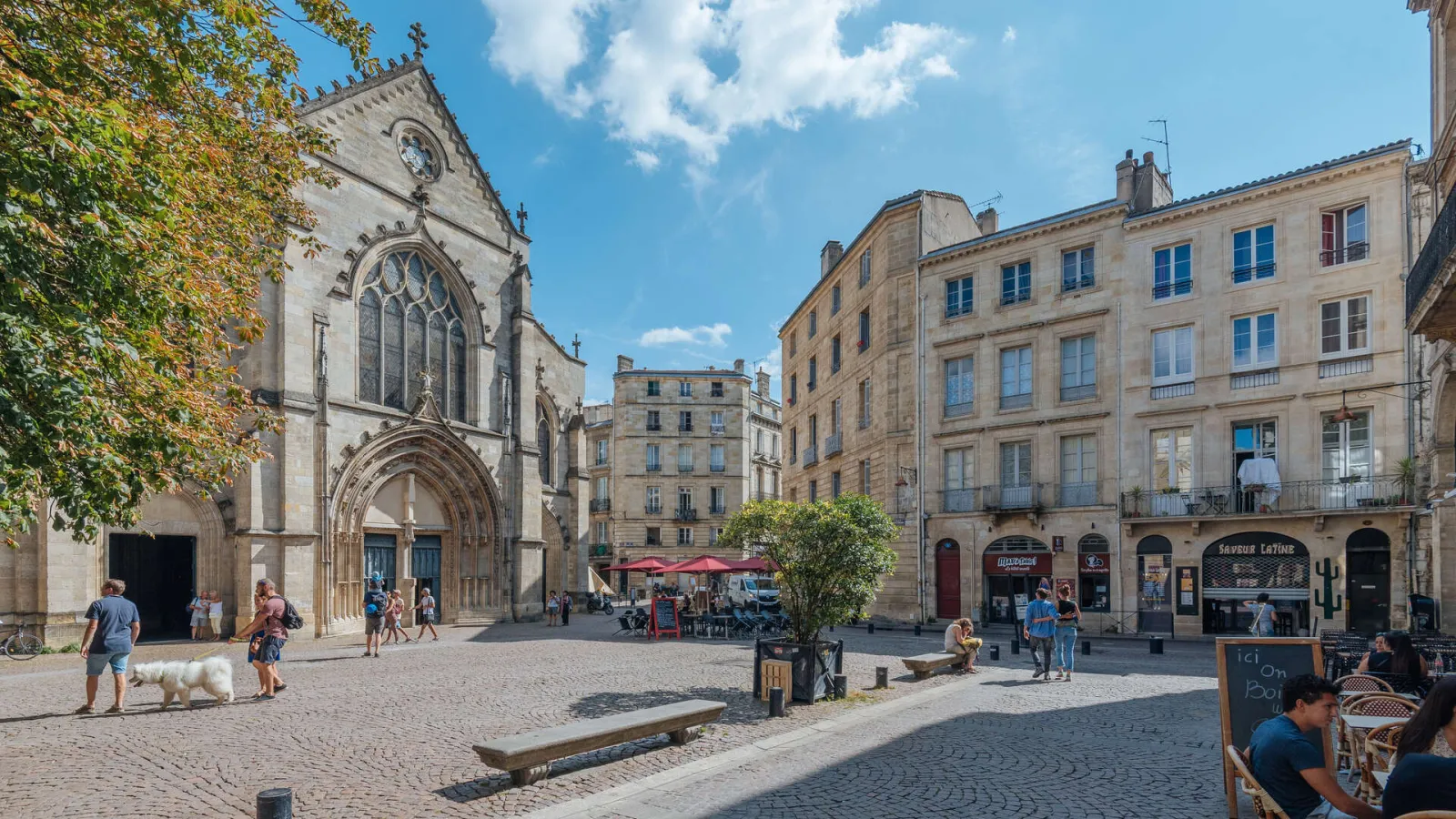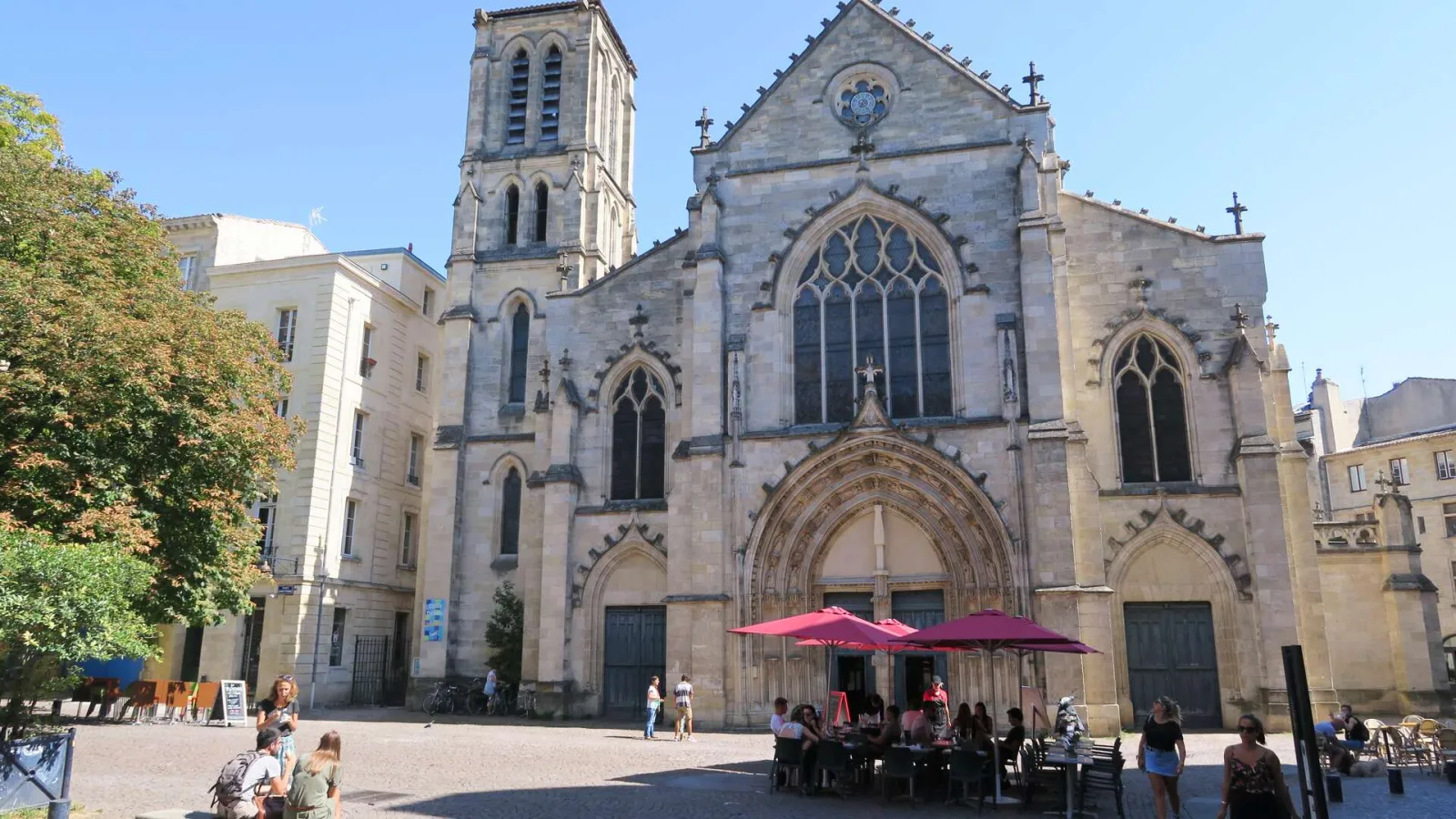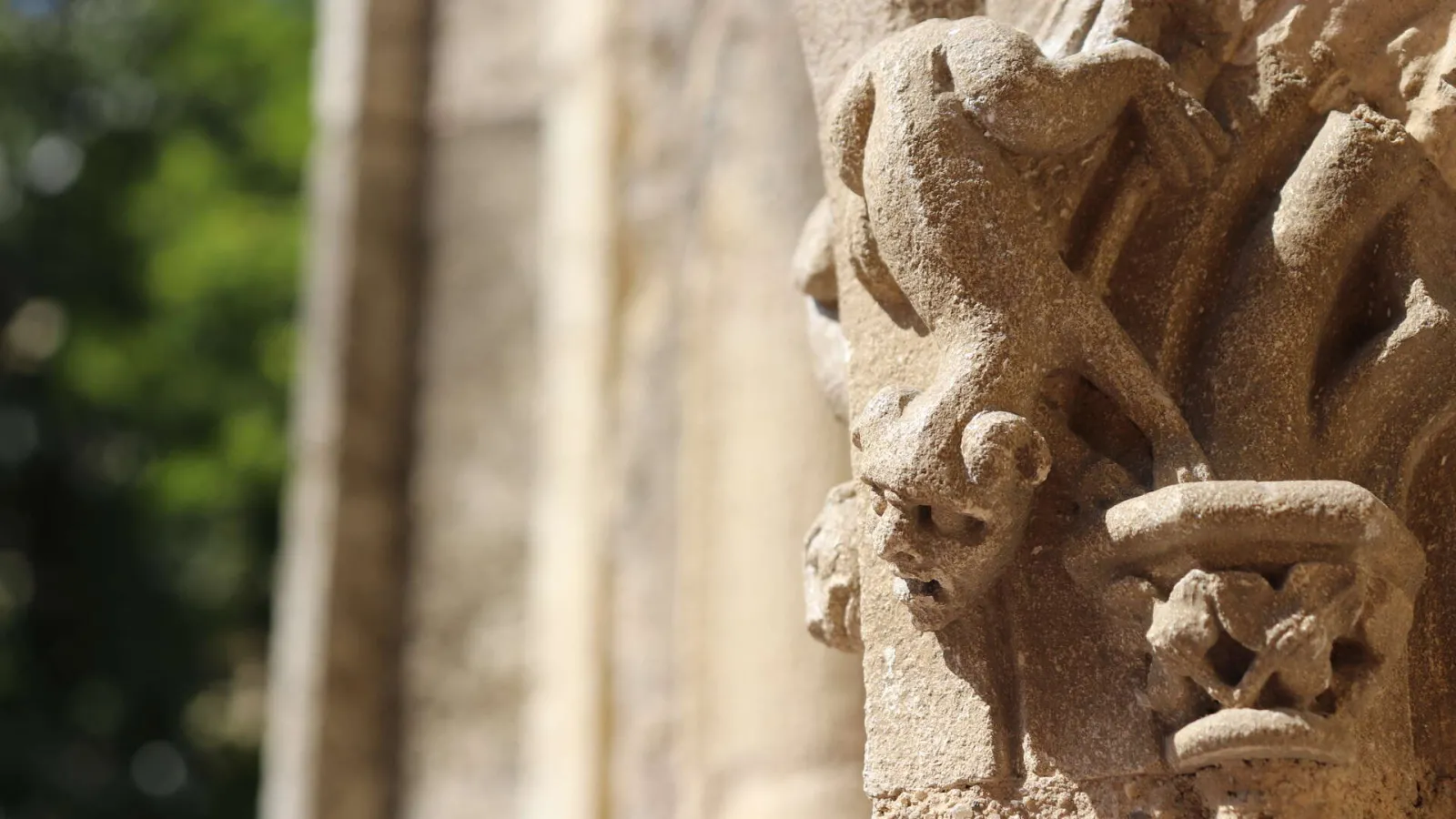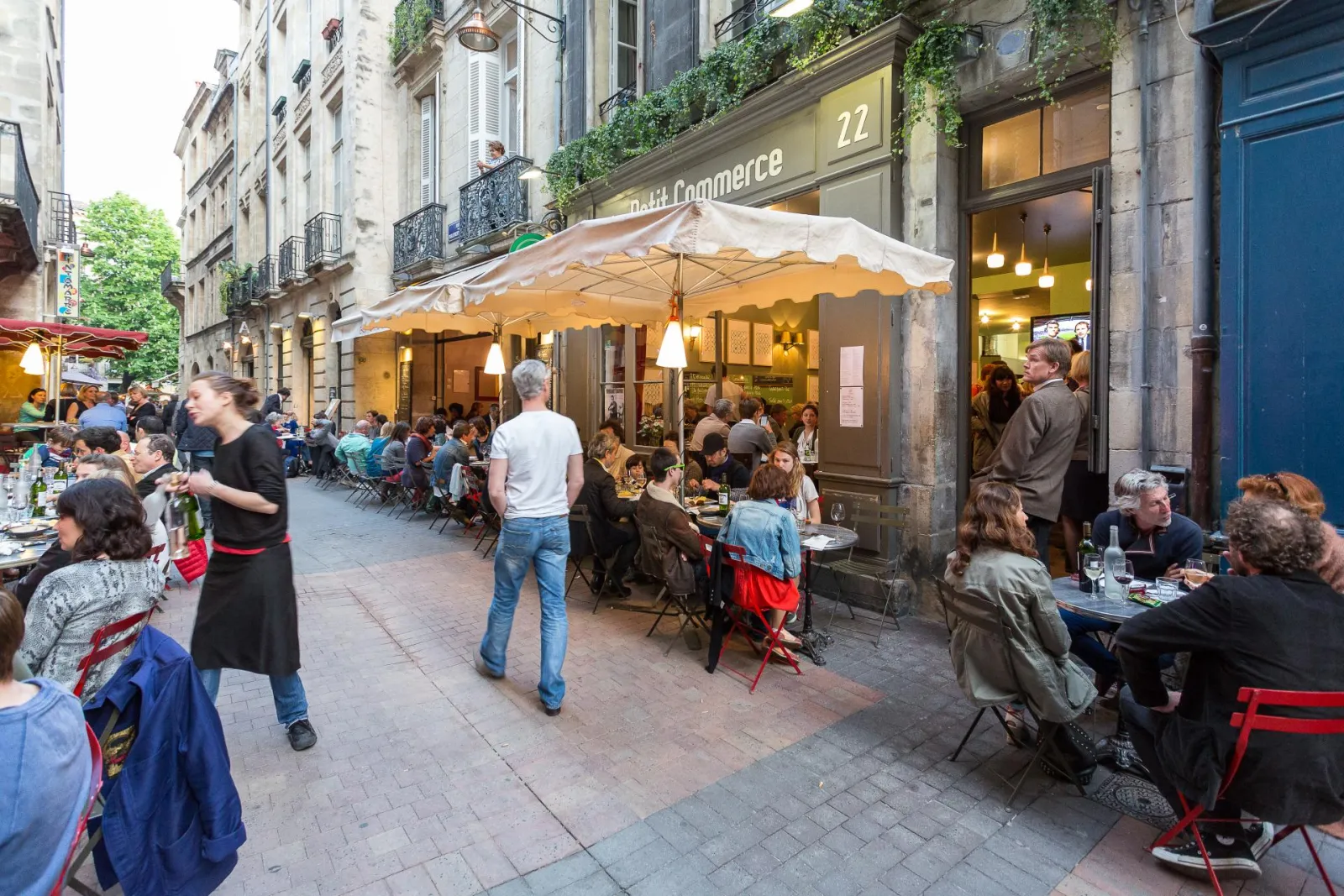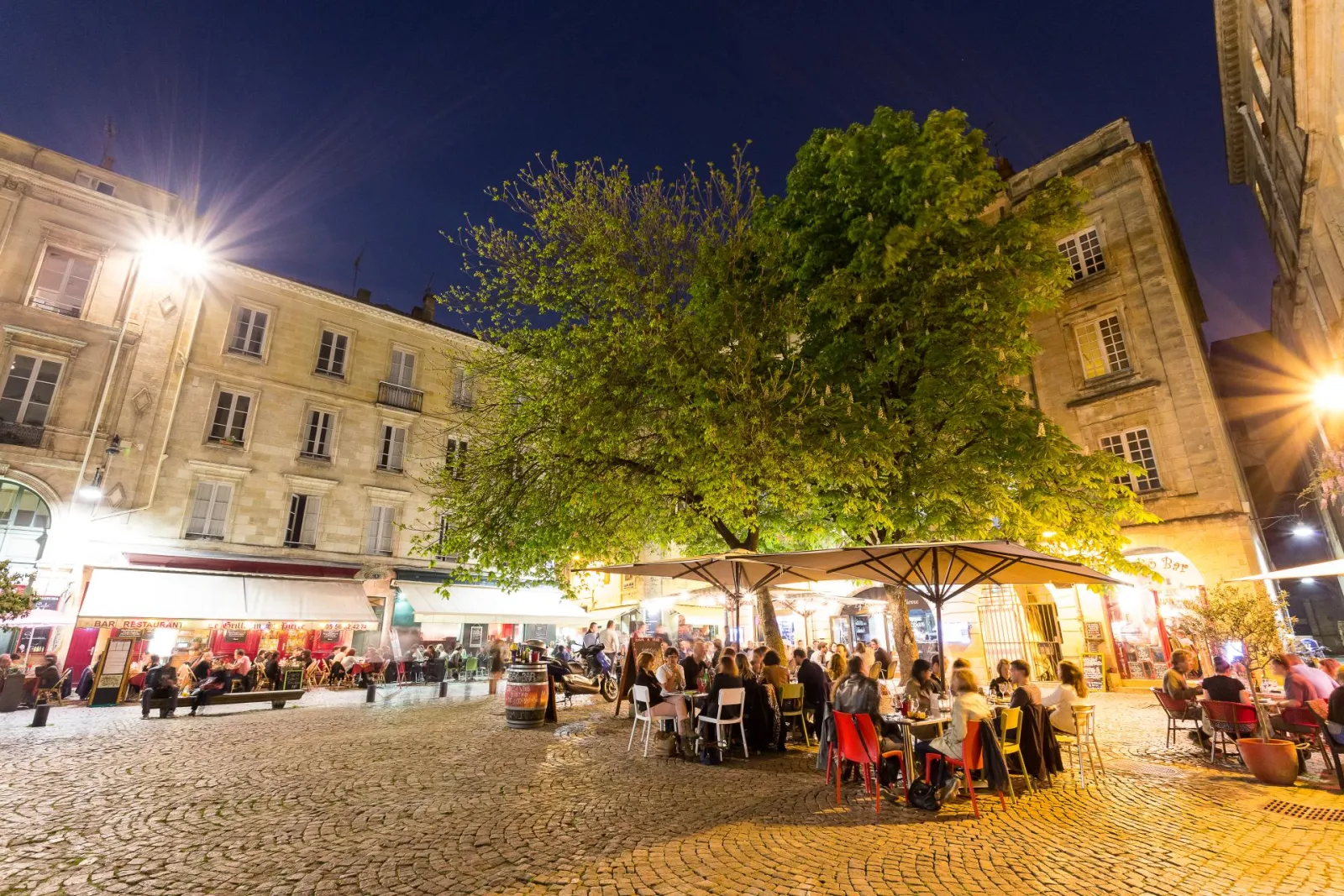Eglise Saint-Pierre
Tourists who come to Bordeaux generally marvel at the beautiful buildings lining the quays before seeing anything else. However, many of them are unaware that the historic heart of Bordeaux is located behind the 18th century Place de la Bourse.
After the Roman town of Burdigala ceased to exist, the inhabitants moved away from the river, and the new city centre became what is now the Saint-Pierre district. The entrance to the inland port was located here centuries ago. Ships full of goods dropped anchor before sailing to other provinces and countries, and a number of merchants grew rich.
The first church was built on the premises of the former port in the Middle Ages. The street names remind us of various professions that were grouped together: rue des Argentiers (goldsmiths), rue des Bahutiers (chest makers), rue du Chai des Farines (grain warehouses), rue Maucoudinat (where seamen's inns were located), and rue des Trois Chandeliers (candlemakers). In the 16th century, prosperous families came to settle here and a law court was established in the Cour des Aydes.
A unique architectural ensemble
The radical innovation of royal intendants in the 18th century was to open up the district to the river and its port. By razing the medieval wall, they cleared the area around Place de la Bourse, rue Royale, and the future Place du Parlement.
This transformation paved the way for the district's rich architecture. Nicolas Beaujon, the first very wealthy merchant, was born in 1718 at no. 11 rue du Parlement-Sainte-Catherine. The merchant Castagnet's house at 16 rue Fernand-Philippart (formerly rue Royale) built in 1760 has a beautiful rounded balcony with magnificent curved ironwork. No. 9 rue des Faussets features a facade decorated with an ornate and beautifully-executed frieze depicting eagles. A niche cared into the stone at the corner of rue du Cancéra and rue des Bahutiers in 1687 has a statue of Saint Pierre. Flora Tristan, one of the first feminists and grandmother of Paul Gauguin died here. A few steps away, at no. 19, where there was once of public fountain, a bas-relief "The Samaritan Women at the Well", was carved by an anonymous sculptor. You cannot leave this district without visiting the wonderful Place du Parlement and admiring urban renewal programmes undertaken by mayors over the years, combining original constructions dating from 1760 and newer buildings in an identical style!
Practical information
-
English
Place Saint Pierre
33000 BORDEAUX

